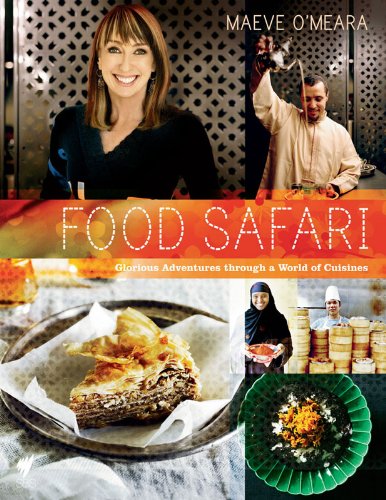The first Food Safari Cookbook (released 2009) is the companion big book of recipes to the popular SBS food program about world cuisines fronted by Maeve O’Meara. While the TV series and the DVDs are well worth watching, this book unfortunately, did not succeed in the cross media translation.
Firstly, the pics are very drab. While there’s something refreshing about that, given the overstylised food porn we are dished up these days, they are not particularly illustrative of the recipes either, which is a shame. But what’s most disappointing are the people shots. While they feature some of the people in the TV series, they don’t come to life – they just lack intimacy.
Perhaps that’s because Maeve is non-existent in the photos. The greatest thing about the TV series is the interaction between Maeve and her various “cultural food ambassadors” who take her into their homes to cook “traditional” ethnic dishes. Her presence, as a white female with a name like Meaeve O’Meara, instantly makes the interviewees the “other”. There’s the tension, which Maeve exploits so well in the TV version by acting as if she’s dazzled by all the exotic ethnic food. I quite like that technique of the seemingly unsuspecting white person being “explained” culture by the ethnic. It’s a nice change to the white male presenter who tramples into other people’s lives, “interpreting” a strange culture to the camera, which is the standard mode of documentaries.
So what I would’ve like to have seen is more in the book is Maeve’s little anecdotes about meeting these “ethnic” cooks that didn’t feature in the TV series. While there is some of that, I wanted more. After all, Food Safari is what it is because of Maeve.
Nonetheless, the book is a great compilation of recipes, and I’m glad to have my copy so I can try some of them, without having to turn on the DVD or go to the Food Safari website.
Our Norimaki recipe is on p. 112-113 (video here). It has a little problem–it only has four fillings, but it should really be five–shredded cucumber is the other one. Five colours is important for Japanese presentation.
by Masako Fukui, Kei’s Kitchen
Food Safari by Maeve O’Meara, originally published in 2009
A bigger compendium of recipes called The Complete Food Safari published in 2014

